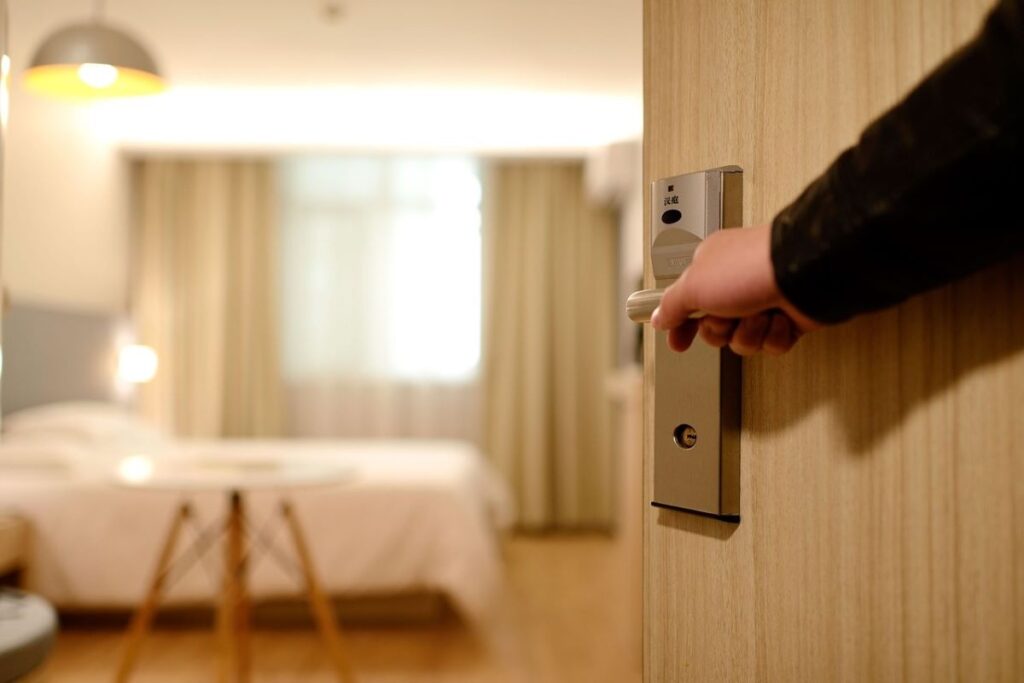
Skift Take
India’s hotel industry has gaps and enough potential to warrant significant growth over the next few years. But whether the players will be able to capitalize is a different question altogether.
Branded hotel room signings in India during the April to June quarter surged by nearly 40% from the same period in 2023, according to data by real estate services company JLL. During the quarter, over 9,700 new keys across 82 branded hotels were signed, while another 50 hotels opened during this period.
Hotel brands continued to focus on Tier-2 and Tier-3 cities, which accounted for 70 of the hotel signings and 45 hotel openings. Midscale and upscale hotels dominated the signings and openings during the period, while a total of only four budget hotels were signed and opened.
JLL also reported a significant increase in revenue per average room (RevPAR) in five key markets: Bangalore, Chennai, Delhi, Hyderabad, and Mumbai. Goa however saw its RevPAR decline by 6%, even as the occupancy rate in the state increased by over 1.5%. Hyderabad reported the most significant increase in the average daily rates – 15%. This translated into a nearly 12% increase in the state’s RevPAR during the quarter.
JLL India hotels and hospitality managing director Jaideep Dang said, “There is strong momentum on both greenfield developments as well as operating assets across business and leisure markets. Although the summer season has brought down corporate room night demand in Q2 2024, the sector continued to demonstrate growth in average daily rates compared to Q2 2023.”
The Gap in India’s Hotels: India is an underserved market in the hospitality segment, as Accor chairman and CEO Sébastien Bazin said earlier this year. According to Bazin, India has less than 200,000 branded hotel rooms – compared to 3 million unbranded keys – even as it has a population roughly the same as China.
The top five hotel operators in India collectively have less than 1,000 hotels, while this figure in China is 25,000, Bazin had highlighted, adding, “The question before all of us is how we could collectively go from 1,000 hotels to 15,000 hotels without having to wait 15 years for it. There is a demand and there is the emerging middle class that needs affordable accommodation and wants to discover the country.”
The supply of operational inventory in the six markets increased by less than 1%, while demand was up 2.7%. This mismatch is also a positive attribute for the India market, Hyatt CEO Mark Hoplamazian had said earlier.
Air India Introduces In-Flight Entertainment System for Older Fleet
Full-service airline Air India has introduced a wireless in-flight entertainment system called Vista for its older widebody fleet. The move is meant to provide the service to passengers flying on the routes where new or retrofitted planes are not yet operational.
Air India has partnered with digital services provider Bluebox for this service, and Vista is being deployed on Bluebox’s digital services platform. With Vista, passengers would be able to stream content on their personal electronic devices through the Bluebox Wow wireless network system.
The newly inducted widebody planes of the airline have the entertainment systems built in and therefore, are not part of this system. Vista will seemingly continue to be in effect until Air India’s older fleet is retrofitted.
Fortune Hotels Signs Upscale Hotel in Uttar Pradesh’s Gorakhpur
Fortune Hotels has signed an operating agreement for an upscale hotel in Gorakhpur, Uttar Pradesh. The 74-key Fortune Park Gorakhpur is expected to open in 2026.
At the launch, Fortune Hotels managing director Samir MC said that the state is growing in its potential, adding that the group already has six strategic alliances in Uttar Pradesh.
In May this year, Samir had told Indian media that Fortune Hotels is looking to open a new hotel every month during this financial year. He had added that he was hopeful about the industry’s ability to attract a diverse range of travelers, given positive factors such as rising disposable incomes, a desire for unique experiences, and improved accessibility.
New South Wales Expecting Surge in Indian Tourists
New South Wales is looking at a double-digit growth in tourist arrivals from India this year. The region is banking on increasing direct air connectivity between Sydney and India for this growth.
Destination NSW country manager Samar Chokshi said that in 2023, over 181,000 Indian tourists visited New South Wales. “Looking at the current trend coupled with more direct flights connecting India with Sydney, rise in disposable income, and easy e-visa application process, we are expecting to boost our tourism and the footfalls are likely to grow in double digit,” he added.
Chokshi added that Indians spent AUD 482.2 million ($325 million) in the state last year during their travels, staying a total of 7 million nights. This was up 109% as compared to the pre-pandemic data.
IndiGo Gains as Air India, SpiceJet Lose Market Share in July
Budget carrier IndiGo regained its lost market share in July, as SpiceJet, Air India, and Air India Express reported a reduction during the month, according to data by aviation regulator Directorate General of Civil Aviation (DGCA). Low-cost carrier Akasa Air also reported a dip in its market share.
Soon-to-be-merged full-service airline Vistara also saw its market share increase for the second consecutive month. This indicates a robust competition between airlines in India, even as IndiGo enjoys a dominating position.
Airlines are trying to expand their networks and offerings to the growing passenger base in India. While IndiGo has announced business class configuration and a loyalty program, Vistara has introduced free Wi-Fi on select flights. Air India is also upgrading its fleet.
India’s domestic passenger traffic during July increased over 7% compared to the same month last year, as nearly 13 million passengers traveled by air during the month. However, in 2024, July continued a downward trend of passengers, which declined from 13.8 million in May to 13.2 million in June.
